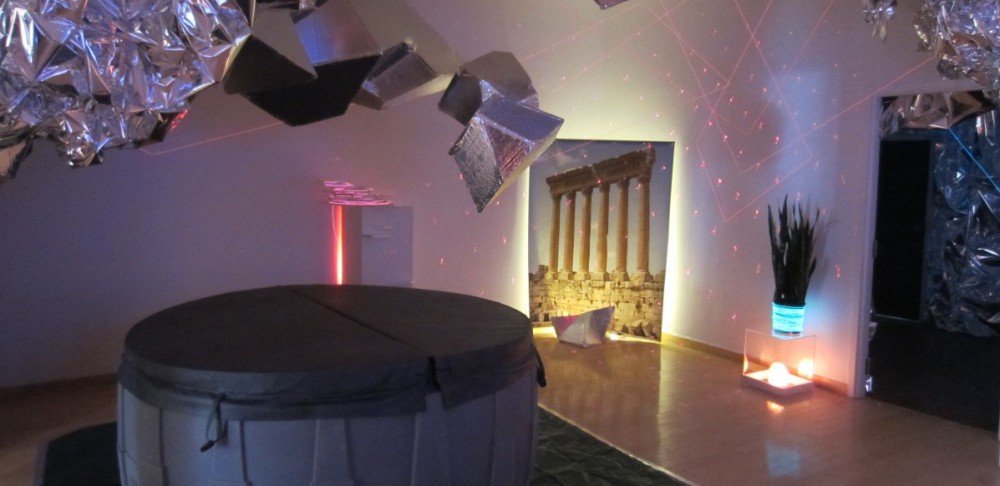I approached this novel with a high level of apprehension. The reason was two fold. First, the back of the book describes “… Connie’s struggle to keep the institution’s doctors from forcing a brain control operation … “, basically a lobotomy(ish) type operation. Wonderful. This brought back memories of One Flew Over the Cuckoo’s Nest (1975) which left me feeling drained after having watched it. Second, the very short science fiction introduction guide has a section referencing this book under state control (Oxford, 88), right next to a reference of Clockwork Orange. Took me awhile to actually give this book a chance, but I’m happily surprised I finally did.
It starts out a little too contemporary for me; as if I were reading a non-fiction or a biography. Woman’s niece runs from her abusive partner to her apartment, and ends up in a ‘mad house’; for a second time we learn later. I had some confusion earlier in the reading, as the author would expose names of characters, only reveal their significance later.
The plot begins to get interesting when the events prior to the first chapter are elaborated on, and Luciente is fully introduced. It is reveled that Connie, the main protagonist, is an “extraordinarily top catcher” (Piercy, 34); a person “whose mind and nervous system are open, receptive to an unusual extent…”. This allows Connie to contact Luciente who is an unusually strong “sender”, someone who is able to send messages from the future; year 2137 to be exact. The next chapters deal with Connie re-adjusting to life in a mental institution as well as her sojourn through 2137 Mattapoisett through Luciente. It was interesting to see how fixated Connie was on determining Luciente’s gender. It makes you – the reader – question if it really matters that Luciente is a woman. This is very telling of how ingrained the notion of gender is in Connie’s mind and how it affects her decisions.
The most blaring themes present in these first chapters are that of gender inequality and social hierarchies. Connie’s emotional instability and current lot in life can be attributed to her harsh upbringing (Piercy, 39). However her upbringing is tied to the circumstances of the society around her, with all its malign aspects. Her mother not giving her enough attention and love as a child, her failed marriages, the loss of Claude, and the abuse of her daughter as a consequence of her grief, can all be traced back to her upbringing; by extension the problems of gender inequality and social hierarchies inherent in society. This brings up the question of whether Connie has agency or control of the course of her life, or if that course is predetermined by and in her beginnings.
The mental institutions Connie is committed to, seem to mirror society as a whole in a number of ways. What struck me as significant was that Connie would describe her time in the asylum as “just surviving”(Piercy, 16). It seems like a microcosm of society as a whole: there is have an authority that sets rules and regulations, social norms one must adhere to, as well as all the ugly aspects of society such as social profiling and gender stereotyping.
I wonder why the future date is chosen as 2137 and not 2203 or even 3493. I suppose the significance is that it is distant enough into the future to believably infer what society might be like, based on what we know of today. Did the author just randomly come up with that number then? 2137 not 2200 which seems a lot more distant, but not 2100 which seems to close? I digress. The world presented in 2137 is largely different from what Connie, and I suspect, the reader would imagine it to be, yet strangely nostalgic and familiar.
The 2137 society is mainly rural, self sustaining, environmentally friendly, egalitarian with a great solidarity and cohesion within the villages. Humans have deemed large urban centers unsustainable. Energy is harnessed from wind and sun. Humans have even learned to communicate and understand animals, leading to a complete dietary change and integration with the natural world. Technology is still prevalent, evidenced by the ‘kenners’ and the databases they are connected too, but it is used judiciously and only for utility.
The most interesting aspect of this society is the dissolution of the institution of gender as we know it in today’s world. There are no stereo types, no roles defined by society, just people. Gender has become just a physiological distinction, as evidenced by the disuse of the pronouns he/she/it for person or animal, and how they treat each other. Male and Female associations have become neutral, and both sexes play equal parts in this society from farming, to the military; we’ve yet to see, who the ‘defense force’ actually defends against. The final form of equality of the sexes mentioned at the end of chapter five was the use of human incubation and birthing machines. This gave both men and women the ability to become ‘mothers’.
These first few chapters present an interesting scenario to discuss gender and societal problems, while presenting us with a believable future to contrast against. I can only hope the novel concludes on a satisfying note.
Nicholson, Jack, Louise Fletcher, Miloš Forman, Jack Nitzsche, Michael Douglas, Saul Zaentz, and Ken Kesey. One Flew Over the Cuckoo’s Nest. Burbank, Calif: Warner Home Video, 1997, ©1975.
Piercy, Marge. Woman on the Edge of Time. New York: Knopf, 1976. Print.
Seed, David. Science Fiction: A Very Short Introduction. Oxford: Oxford University Press, 2011. Print.




Interesting points I like how you’re using ideas/influences from the Introduction to Science Fiction book.